This post is a quick tutorial on how to set up a GUI for debugging NRF51 code
2015-11-22
Previous article
#Introduction
Currently, CLion does not support remote debugging, but they promised to consider it if enough votes were collected - so vote here! I am sure it’s going to be seamless once they implement it, so I’m awaiting eagerly.
Modifying XCode to use ARM tools is a big challenge and support documentation seems to stop at XCode 6. I have it in mind to try to write a plugin to support toolchain switching as well as code templates, so watch this space...
I also tried configuring CodeLite as there were romours that it was possible. Unfortunately it never worked for me (user error, I assume) but I intend to pursue this as I’d like to support this open source effort.
Conscious of my mental well-being, I am avoiding Eclipse and will not refer to it again in this post.
So which shall we use? NetBeans. While not the most modern and the least flexible of above-mentioned IDEs, it actually manages to debug cross-compiled code running on a remote device.
Here’s how
Step 1: Download the C/C++ enabled version of NetBeans from here.
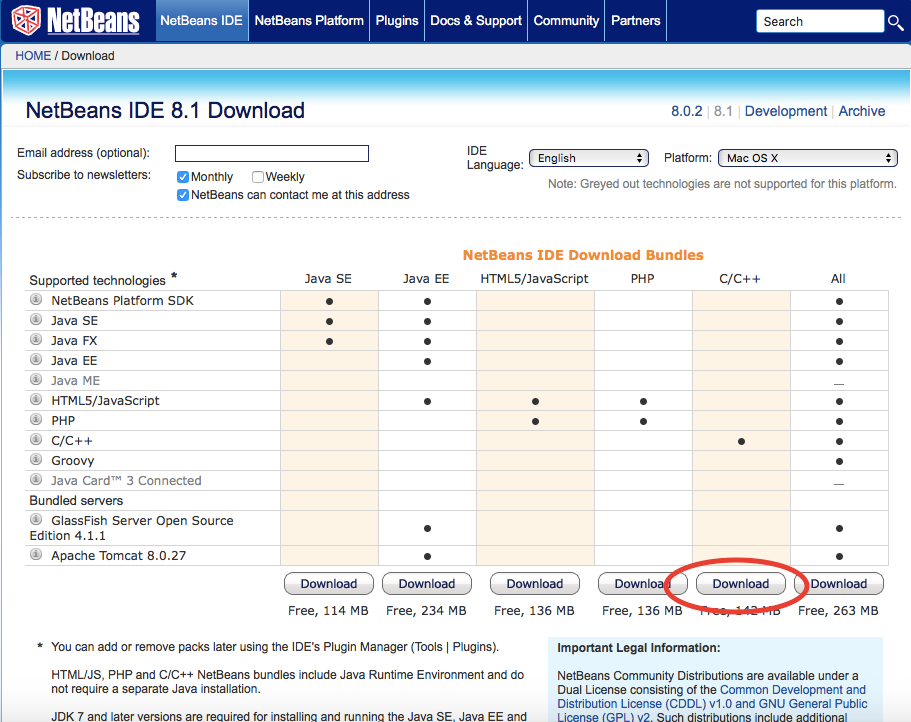
Step 2: Create a new project
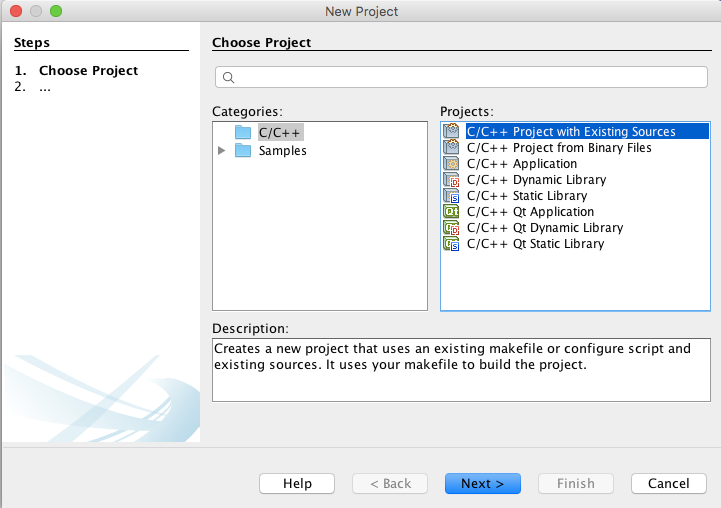
Follow the wizard’s path and select to open your project’s root directory.
Step 3: Create a new configuration for the ARM toolchain
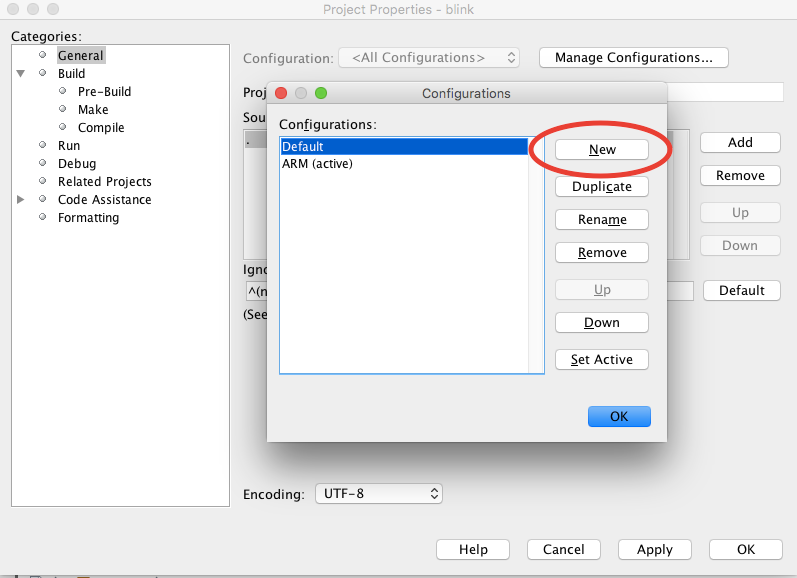
Step 4: Set up the toolchain
Enter the path of your ARM toolchain, usually in /usr/local and fill in the rest of the form

You can access this form in the future by clicking on the “Services” tab on the left hand side of the project explorer

Then right click on the configuration name and select “Properties"

This will bring up a similar window as was shown the first time when you configued the toolchain
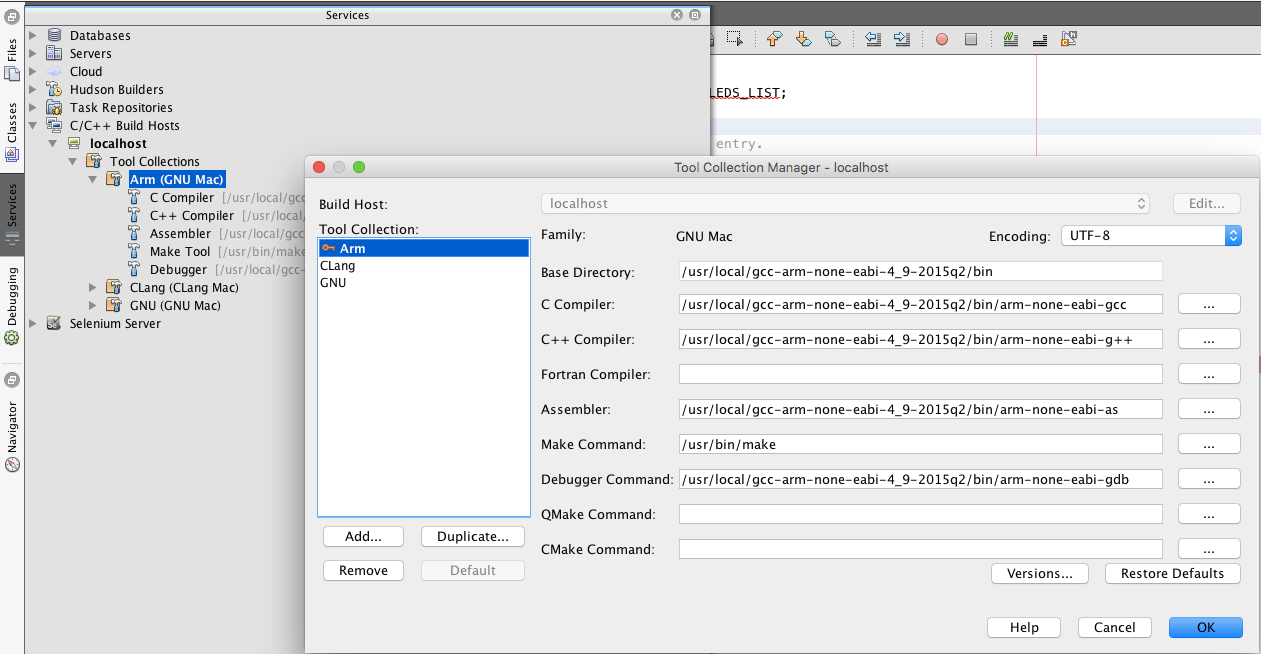
At this stage, you’ve set up a configuration to use the ARM toolchain.
Step 5: Connect the config to our project.
This is done by selecting “Set Project Configuration” from the Run menu
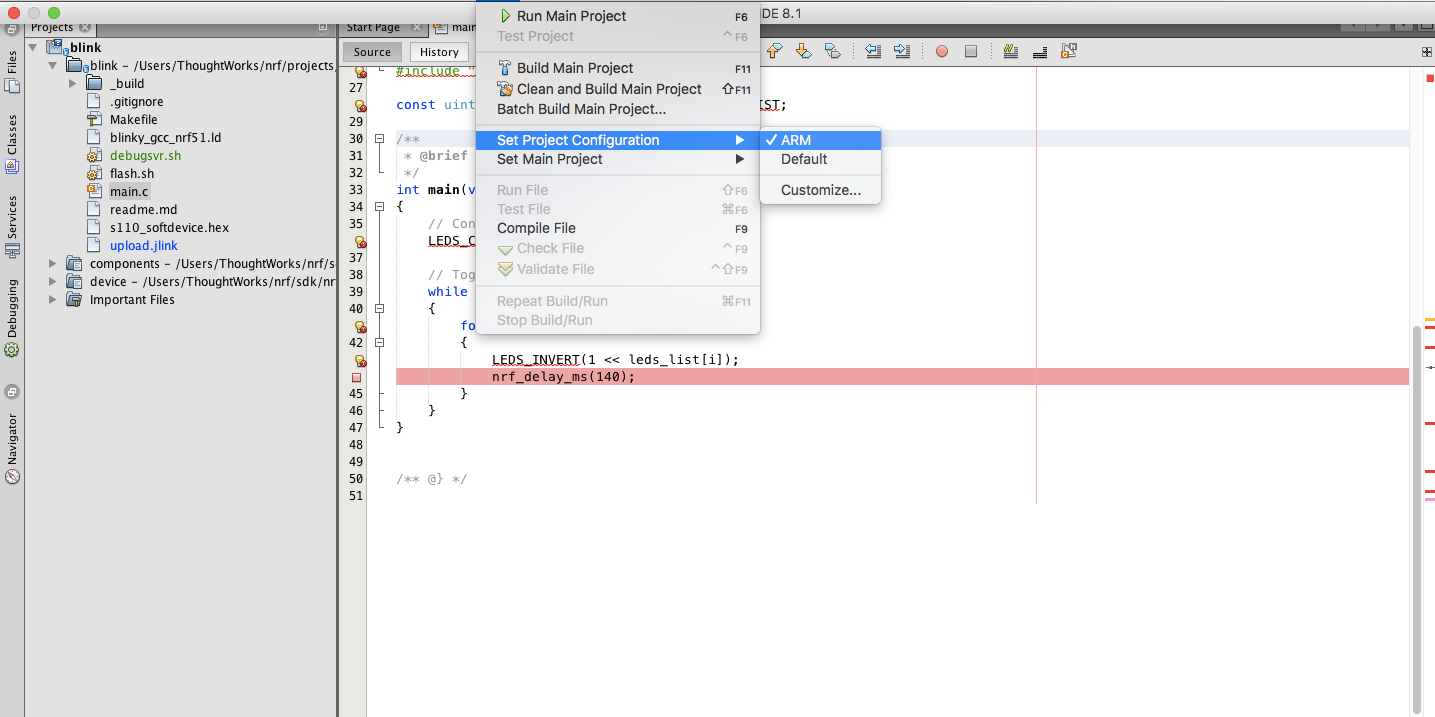
Step 6: Verify that the project is set to use the ARM config.
This is done by selecting “File/Project Properties” and making sure that “Tool Collection” is set to “ARM"
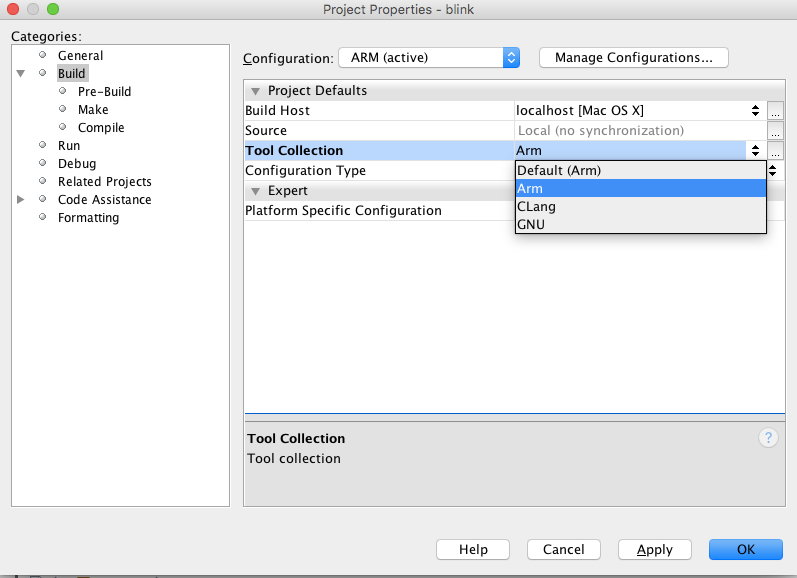
Step 7: Set up debugging session parameters
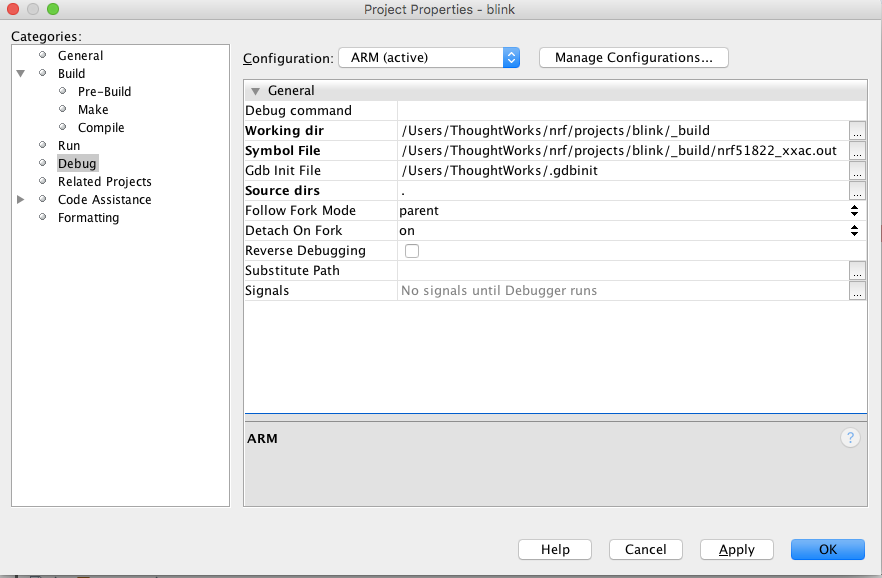
You should now be ready!
Let’s build the application by using your makefile
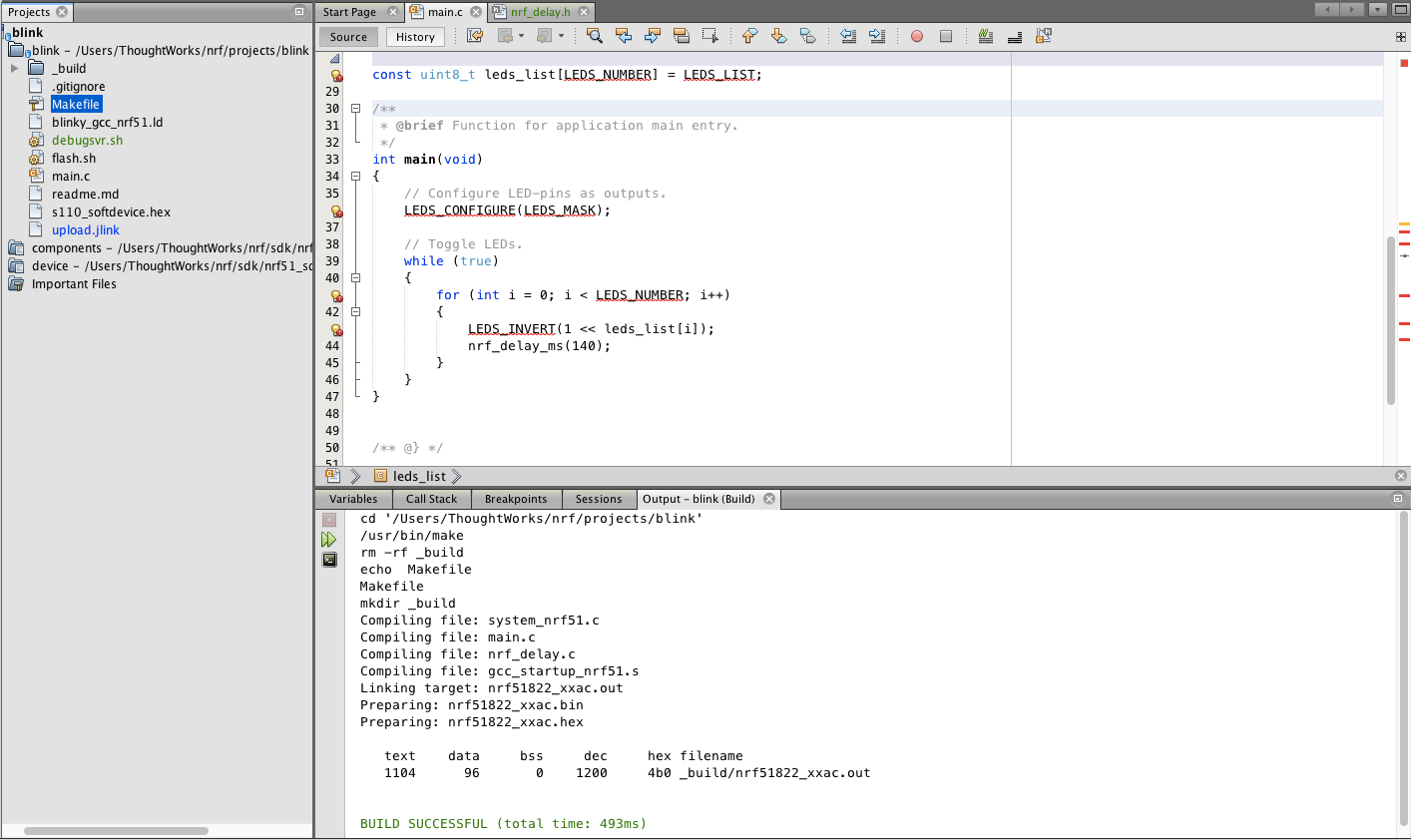
To debug, we must first launch the “jlinkgdbserver” executable, as described in my previous blog.
Unfortunately, I have not found a way to automatically do this from within NetBeans as it does not appear to have a pre-debugging hook where we would have been able to run the server. If anyone is aware of doing so, please alert me and I will update this post.
Open a terminal window and run the following command:
jlinkgdbserver -device nrf51822 -if swd -speed 4000 -noir -port 2331
The result should look something like this:

We can now start our debugger session by selecting “Debug/Attach Debugger” in NetBeans
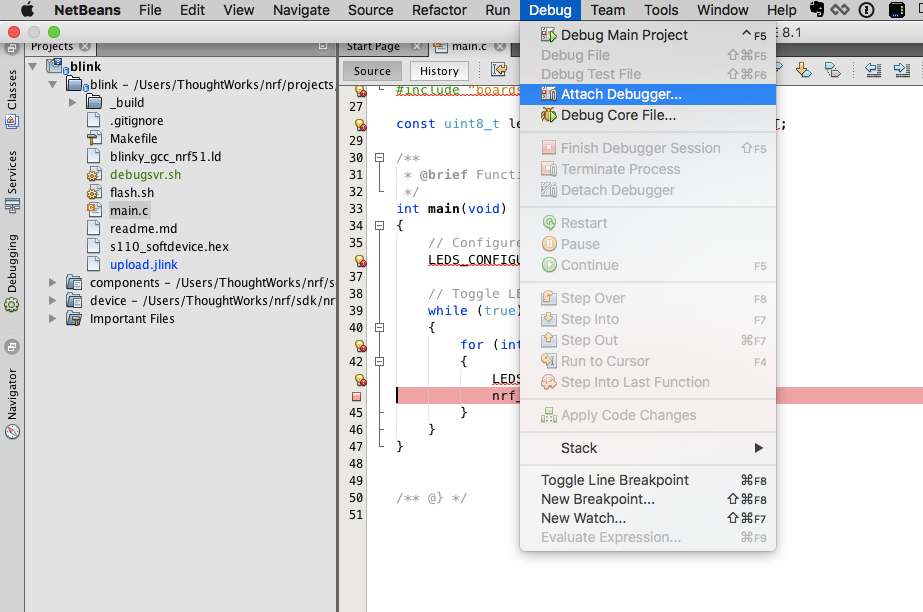
This will open a dialog that you should fill in as shown here

If everything went well, you should be able to see the code in NetBeans and use their debugger fully!

I hope you found this tutorial helpful! See you next time, hopefully with a solution for CLion and XCode.
Happy hacking!
Previous article
Filed under
BLE
Embedded
nrf51
Other Tags
API GW
AWS
- Programming ESP32 using MQTT with AWS and FreeRTOS
- Quick AWS IoT Setup and test
- Set up AWS API GW with a Typescript authorizer and logging
- Use AWS CodePipline to execute CloudFormation templates
- Use GitHub Actions to deploy your SPA hosted on Amazon S3
- Use an AWS CloudFormation script to create and host an SPA on S3 with SSL and apex/subdomain redirection using CloudFront
- Writing an Alexa skill using Ruby and AWS Lambda (Part 0)
ActiveRecord
Agile
- A review of software development metrics
- Agile programme management brief
- An alternative to current product development metrics
- An alternative to the current product development governance model
- Command & Control Management - The Party Killer
- Document Driven Development
- Inceptions revisited
- Managing multiple stakeholders
- Returns Driven Development
- The tip of the (good) iceberg
Alexa
Analysis
Ansible
BDD
BLE
C
CAB
CloudFormation
- Set up AWS API GW with a Typescript authorizer and logging
- Use AWS CodePipline to execute CloudFormation templates
- Use GitHub Actions to deploy your SPA hosted on Amazon S3
- Use an AWS CloudFormation script to create and host an SPA on S3 with SSL and apex/subdomain redirection using CloudFront
- Writing an Alexa skill using Ruby and AWS Lambda (Part 0)
CloudFront
CloudWatch
Cross-compile
Cucumber
DevOps
Devops
DotNet
Embedded
Fitbit
GNU
GitHub Actions
Governance
How-to
Inception
IoT
Javascript
Jest
Lambda
Mac OS X
- Bluetooth Low Energy (BLE) Implementing a peripheral on Mac OS X
- Cross-compiling for Raspberry Pi on a Mac and debugging using NetBeans
- Drobo will not mount in Finder
- Quickie - ssh dynamic port forwarding to avoid unsecured public networks
- Remote compilation, execution and debugging Raspberry Pi from a Mac using NetBeans
- Weekend warrior - MacRuby and rSpec, Mac OS X Lion, Xcode V4.3.2
MacRuby
Metrics
MySQL
NetBeans
Objective-C
PMO
Product Management
- A path to accelerating value realization
- A review of software development metrics
- Agile programme management brief
- An alternative to current product development metrics
- An alternative to the current product development governance model
- Express initiative kickoff formula
- Inceptions revisited
- Managing multiple stakeholders
- Plan for value delivery
- Pre-prod activity - Futurespective
- Value Stream Mapping
- When planning, it's not only about relative complexity
Programme management
Project Management
- A path to accelerating value realization
- A review of software development metrics
- Agile programme management brief
- An alternative to current product development metrics
- An alternative to the current product development governance model
- Command & Control Management - The Party Killer
- Express initiative kickoff formula
- Inceptions revisited
- Managing multiple stakeholders
- Plan for value delivery
- Pre-prod activity - Futurespective
- Value Stream Mapping
- When planning, it's not only about relative complexity
Quality Assurance
Rails
Raspberry Pi
Remote compilation
Remote debugging
Remote execution
Risk Assessment
Route 53
Ruby
- Alexa on Rails - how to develop and test Alexa skills using Rails
- Arduino programming using Ruby, Cucumber & rSpec
- How to reconnect to a database when its connection was lost
- Oh, the places you'll go...
- Quick AWS IoT Setup and test
- Weekend warrior - MacRuby and rSpec, Mac OS X Lion, Xcode V4.3.2
- Writing an Alexa skill using Ruby and AWS Lambda (Part 0)
Some helpful links regarding the subject:
- ARM toolchain: GCC ARM Embedded in Launchpad
- Blog entry on setting up an NRF51 dev environment manually: Nordic NRF51 up and running | InContext, by Itamar Hassin
- Setting up an NRF51 dev environment on your mac: ihassin/fruitymesh-mac-osx · GitHub
- Setting up an NRF51 dev environment using Ansible (VirtualBox and Parallels): ihassin/fruitymesh-ubuntu-vm · GitHub
- Compiling an example using Make and CMake : ihassin/nrf51-blinky-cmake · GitHub
- FruityMesh example module: ihassin/fruitymesh-ping · GitHub
- FruityMesh example on official FruityMesh site: fruitymesh/Readme.md at master · mwaylabs/fruitymesh · GitHub
- Debugging NRF51 code using NetBeans GUI: NRF51 full-screen debugging | InContext, by Itamar Hassin